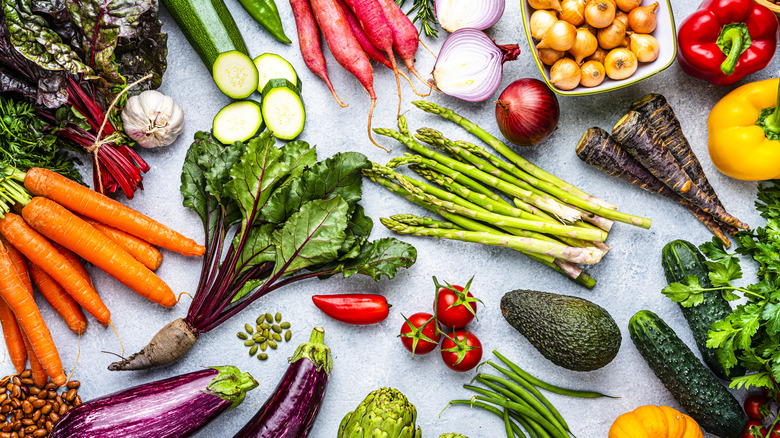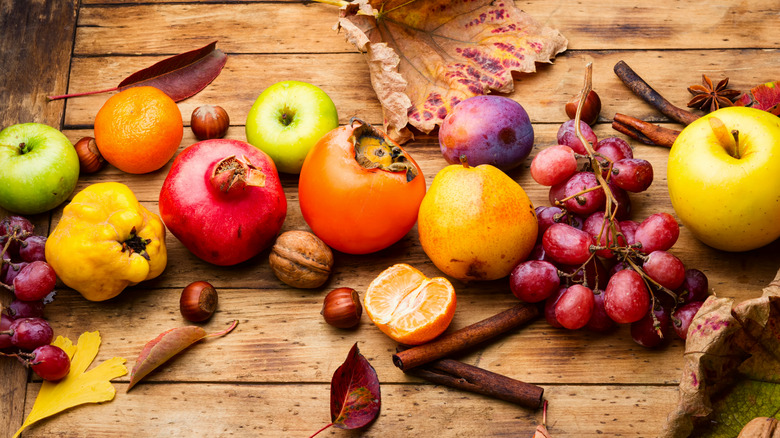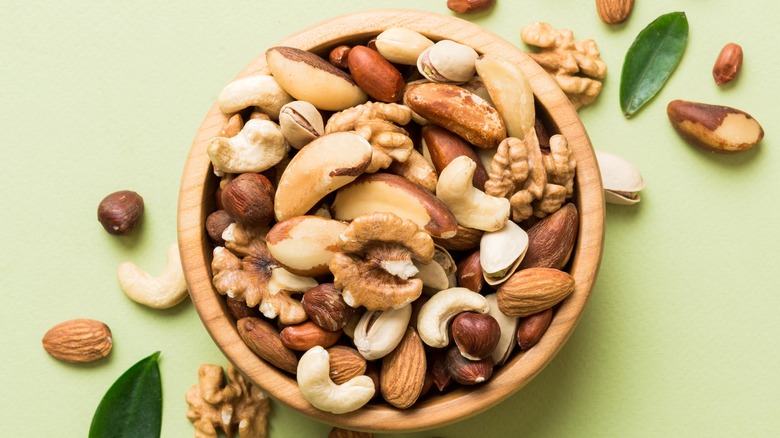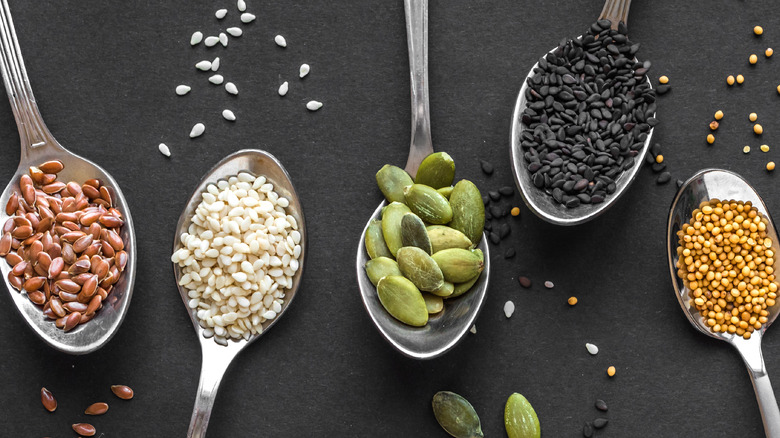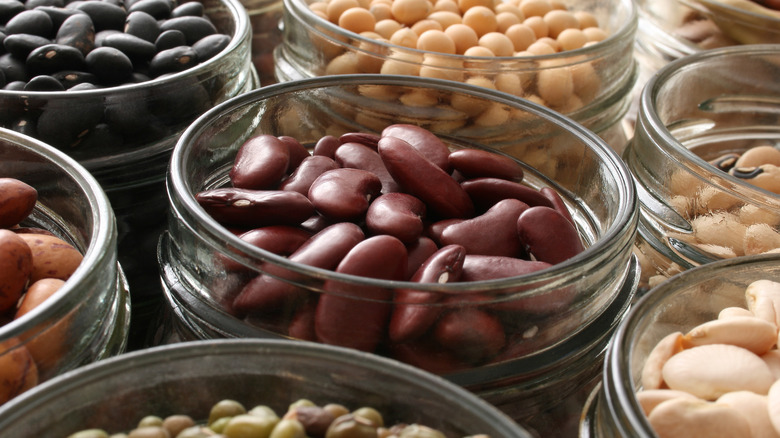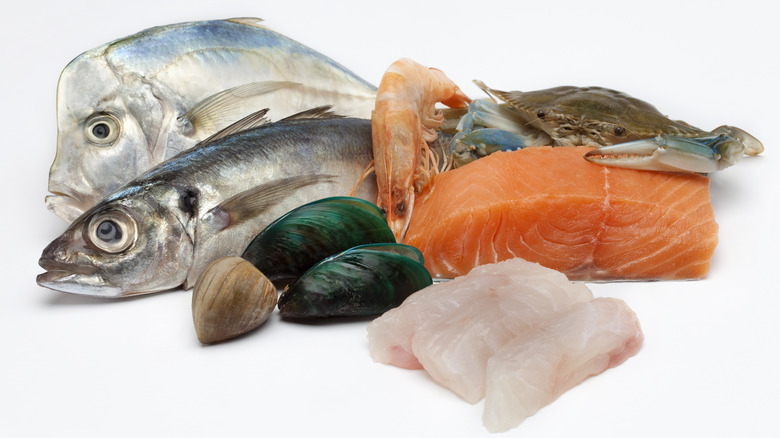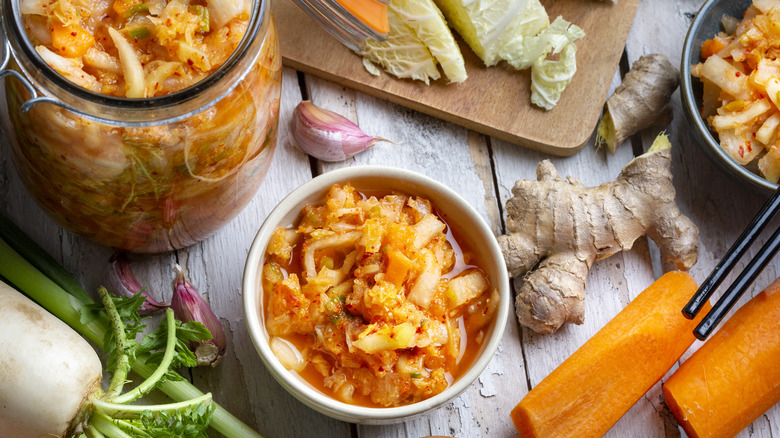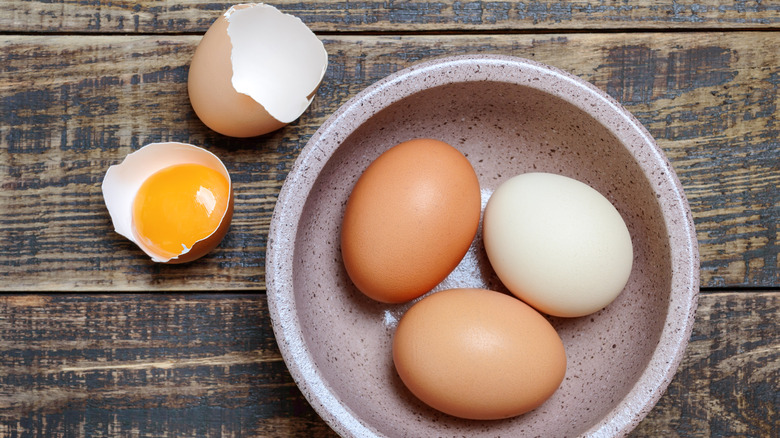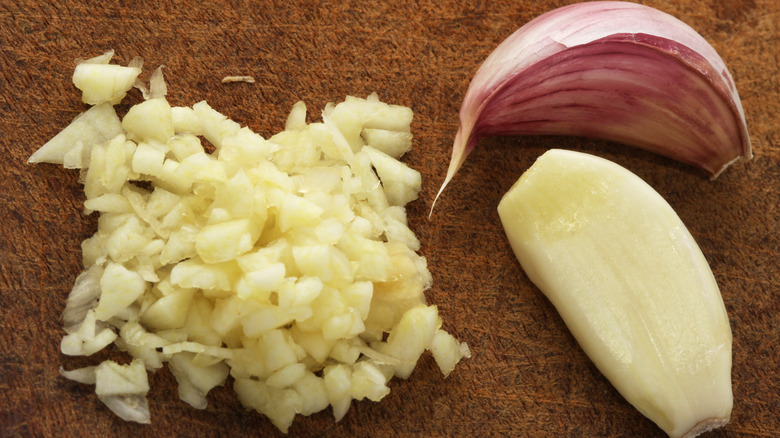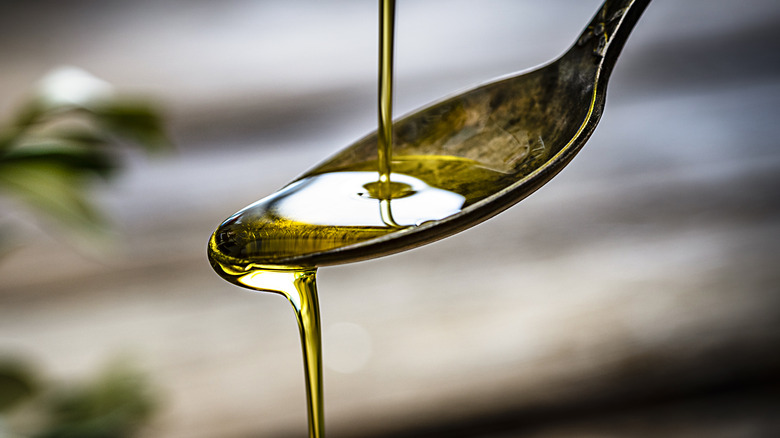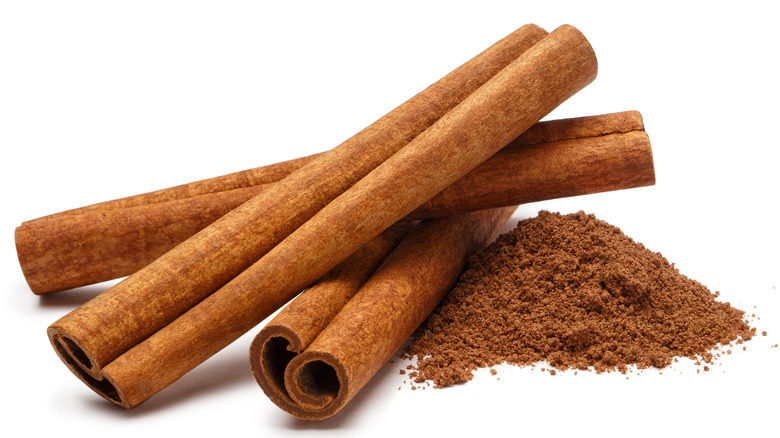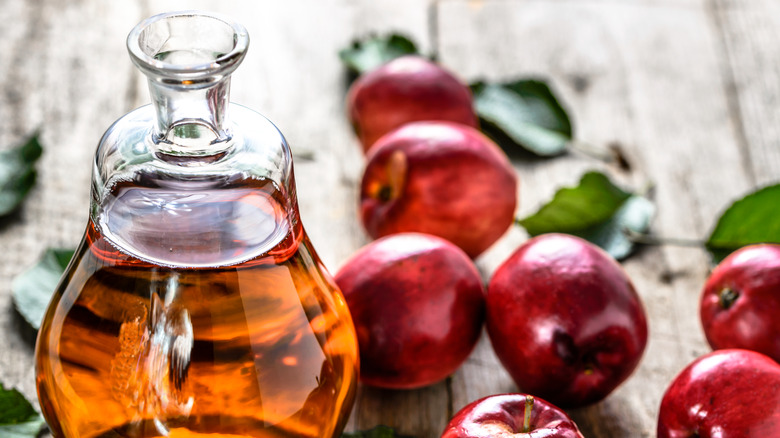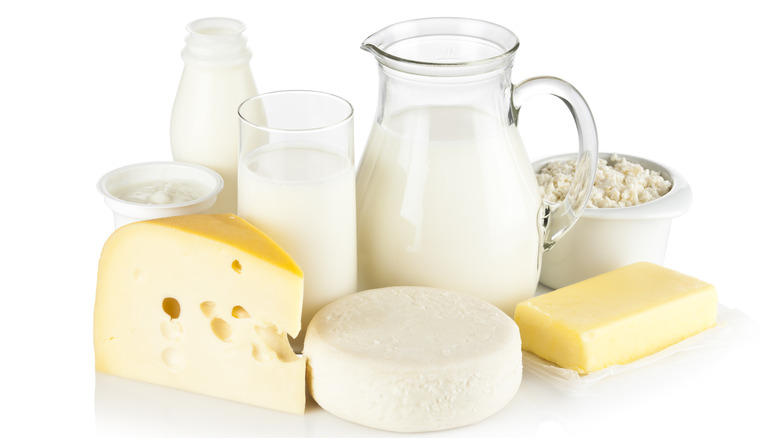Foods You Should Be Eating To Reduce Your High Blood Sugar Levels
Diabetes has become such a common health concern that each one of us most likely knows someone who has it. Unfortunately, it is a lifelong condition associated with a diverse set of complications. As stated by the American Heart Association, having high levels of sugar in the blood can cause damage to several areas of the body, consequently increasing the risk of developing other problems like heart disease, stroke, peripheral artery disease, osteoporosis, blindness, lower extremity amputation, and cognitive decline. It is therefore important to monitor your blood sugar level regularly and take steps to ensure that it stays within the normal range as much as possible.
One of the best ways to control your blood sugar is to carefully choose the foods you eat. Some experts suggest looking into glycemic index (GI) and glycemic load (GL). GI is a score assigned to different types of food that gives a rough estimate of how slowly or quickly they increase your sugar level. The lower the GI, the slower it raises blood sugar, and vice versa. GL is a value that approximates how high your sugar level can get after eating a specific type of food. Focusing on foods with low GI and GL can help prevent abrupt spikes in your sugar level. Other experts believe that decreasing your total carbohydrate intake is more important than GI and GL (per Harvard Health). Both methods are effective in helping with blood sugar control.
Below are some great examples of food to eat for people with diabetes.
Vegetables
The U.S. Department of Agriculture (USDA) classifies vegetables according to their nutrient profiles. There are five main subgroups: dark green vegetables; red and orange vegetables; starchy vegetables; beans, peas, and lentils; and other vegetables. As a whole, vegetables are an excellent food choice because they are naturally packed with essential nutrients (e.g., folate, zinc, magnesium), antioxidants, and fiber that help our bodies function properly and stay healthy. Specifically, vegetables can aid in digestion, improve absorption of vitamins and minerals, increase energy levels, lower blood pressure, prevent calcium buildup in the arteries, and control blood sugar levels (via WebMD).
Per Medical News Today, some of the best vegetables to eat for people with diabetes are green leafy vegetables (e.g., spinach, kale, bok choy), red and green bell peppers, broccoli, cauliflower, celery, arugula, asparagus, and Brussels sprouts. In addition to choosing the right types of vegetables, how they are prepared is equally as important. Try to get fresh vegetables as much as possible. If you can only get the canned version, reach for the ones with no added salt or sugar. You should also avoid frying them and peeling out the skin. If possible, eat them raw or opt to boil, bake, or grill them.
It is important to note that although vegetables are clearly beneficial to our health, there are certain types that diabetics should try to avoid, mainly because they contain relatively high levels of carbohydrates. These include corn, parsnips, plantains, potatoes, sweet potatoes, and yams (per Diabetes Meal Plans).
Fruits
Fruits and vegetables often go hand-in-hand when talking about healthy eating, so it only makes sense that fruits are also a good food choice for people with diabetes. But fruits are naturally sweet; aren't diabetics supposed to avoid anything that is sweet? Well, yes and no. People with diabetes still need to have carbohydrates in their diet, but they may need to eat less of them, and choose sources that will not cause their blood sugar to spike too much. Similar to vegetables, fruits are also rich in fiber, which can help prolong the feeling of fullness and avoid sudden elevations in blood sugar (via Cleveland Clinic).
Fruits are an excellent source of carbohydrates, and are a great way to help diabetics satisfy their sugar cravings. According to the American Diabetes Association (ADA), how you incorporate fruit into your diet can depend on which type of diabetic diet you are on. If you are counting your carbohydrate intake, a serving of 15 grams of carbohydrates typically looks like half of a medium-sized apple, banana, orange, or nectarine; a cup of blackberries, raspberries, cubed cantaloupe, or cubed honeydew melon; ¾ cup of blueberries; or 1 and ¼ cup of whole strawberries (per Mayo Clinic). People using the plate method can add a small piece of whole fruit or ½ cup of fruit salad to their meals. Lastly, for folks using the glycemic index (GI), great examples of low-GI fruits include grapefruit, dried apricots, apples, strawberries, and grapes (via University Health News).
Nuts
Nuts are another great addition to the diets of people with diabetes. Not only are they uniquely tasty and fun to eat, but they are also loaded with fiber, protein, and varying amounts of vitamins (e.g., folate, vitamin E, thiamine) and minerals (e.g., magnesium, calcium, potassium). They are also known to be high in unsaturated fats, which are considered the healthy type of fat. They may help in weight loss, as well as in the prevention of heart disease, high cholesterol, rheumatoid arthritis, and dementia (via WebMD).
Per Medical News Today, the best nuts to eat if you are diabetic include almonds, cashews, peanuts, pistachios, and walnuts. Although the exact mechanism is unclear, it seems like nuts can indirectly help with blood sugar control. Studies show that people who consumed these nuts experienced a decrease in their bad cholesterol level, an increase in their good cholesterol level, a reduction in their risk of heart disease, lower blood pressure, weight loss, appetite control, and/or better sugar levels.
As healthy as nuts are, consuming them in large amounts at a time is not advisable either. They are relatively high in calories, so they can cause you to gain weight if you add them to your usual diet instead of using them in place of something that you already normally eat. You should also avoid eating flavored and salted nuts, since flavorings can add sugar and even more calories to your diet, and salt can worsen high blood pressure (via Harvard Health).
Seeds
Seeds are classified in the same subgroup as nuts by the USDA. They are under the protein foods group and include chia seeds, flax seeds, pumpkin seeds, sesame seeds, and sunflower seeds. In terms of nutrition, they are not that different from nuts. In fact, Tufts explains that nuts and seeds are technically the same thing, they just come from different botanical sources. Nuts come from trees, while seeds are from other plants and crops.
Flaxseeds, chia seeds, and sunflower seeds may be the most beneficial for people with diabetes. According to Healthline, studies show that flaxseeds may directly reduce blood sugar levels. On the other hand, chia seeds and sunflower seeds may indirectly help with diabetes by decreasing blood pressure and bad cholesterol levels, respectively.
Per Cleveland Clinic, to eat sunflower seeds, simply peel off and discard the outer shell and eat them as is. You can also buy ones that have already been peeled before being packaged. To eat flaxseeds, choose those that are already ground up (and thus easier to digest). You can add ground flaxseed to your cereals, smoothies, and yogurts, or use it for baking certain pastries. To eat chia seeds, begin with small amounts (1 to 2 tablespoons) at a time and add them to your smoothies and oats. You can also combine them with water to make an egg substitute. Healthline warns, however, that because chia seeds are rich in fiber and can absorb a lot of water, eating too much can cause digestive issues like constipation.
Beans
Beans, together with peas and lentils, are part of a food group called legumes. They are considered good food choices for people with diabetes because they have a relatively low glycemic index (GI). To put things in perspective, regular table sugar has a GI of 100, which is the highest possible value that can be assigned to a specific type of food. On the other hand, kidney beans have a GI of 29, black beans have a GI of 30, butter beans have a GI of 36, and pinto beans have a GI of 42 (via the University Health News).
According to Diabetes Meal Plans, beans are rich in fiber, protein, and nutrients, but are low in fat. This makes them an ideal food choice to add to your diet. Beans are also high in carbohydrates, which may make you think that it is ironic to recommend them for people with diabetes. However, nutrition is a lot more complex than it seems. Diabetics should stay away from foods that are high in simple carbohydrates (like white bread, rice, and soda), but beans are loaded with complex carbohydrates and fiber, making it less likely for blood sugar levels to significantly and abruptly increase.
Of course, the key is to only eat what is necessary. Eating too much of something that is considered healthy will not make it any healthier. For beans, that is typically no more than half a cup of beans per serving.
Whole grains
Grains are specific types of seeds that come from cereals. No, not the Honey Nut Cheerios kind of cereal (though breakfast cereals do come from processed grains). Cereals are grass plants that are mass-produced and harvested for their seeds. Examples include oats, wheats, and rice.
Per Mayo Clinic, there are two main types of grains: whole grain and refined grain. As their names suggest, whole grains have all of their parts intact, while refined grains have some of their parts removed. The parts that get removed from refined grains are the bran (hard outer coating) and germ (internal structure that sprouts into a new plant). The bran and germ are the most nutritious parts of a grain, so it goes without saying that whole grains are much healthier compared to refined grains. Examples of whole grains include colored rice (e.g., brown, black, red, wild), quinoa, oatmeal, barley, millet, and whole-grain or whole-wheat products (e.g., flour, bread, breakfast cereals). On the other hand, refined grains can be found in white bread, white rice, regular pasta, and most breakfast cereals.
Whole grains are rich in fiber, complex carbohydrates, B vitamins, healthy fats, and minerals such as iron, magnesium, and selenium. They can indirectly help with diabetes by decreasing cholesterol levels, aiding in weight loss, and protecting against heart disease (via USDA). A good amount to consume according to YRMC Health is around ¼ the size of a standard meal.
Seafood
Incorporating seafood into your diet is a great way to add variety and distinct flavors to your meals. Seafoods in general have relatively low to no carbohydrate content, making them ideal choices for people with diabetes. They also contain high amounts of protein, as well as omega-3 fatty acids, which are considered to be good sources of fat (per Diabetes Meal Plans). According to a 2021 review published in Experimental and Therapeutic Medicine, not having enough omega-3 fatty acids (and having more omega-6 fatty acids) puts the body in a pro-inflammatory state, which is significantly associated with the development of health problems like atherosclerosis, obesity, and diabetes.
Fish are particularly known to be rich in omega-3 fatty acids. Examples include salmon, tuna, herring, mackerel, sardines, and trout. According to the ADA, people with diabetes should avoid eating breaded and fried fish. Instead, choose to cook fish by baking, broiling, or grilling to avoid adding any more unnecessary calories. It is also recommended for diabetics to eat two servings of fish per week.
Other types of seafood also have omega-3 fatty acids, although not as much as fatty fish do. Examples include oysters, shrimp, lobster, and clams. As healthy as seafood is, however, the United States Environmental Protection Agency (EPA) warns that some may contain toxic levels of mercury, and you should be on the lookout for official advisories before consuming any of them.
Fermented food
Fermentation involves using microorganisms to alter food. In the past, this was done primarily to preserve food to make them last longer. Later on, people realized that fermentation can actually bring about new and unique tastes and textures in food, and possibly provide numerous health benefits.
As explained by authors of a 2019 article published in Nutrients, fermented foods contain varying concentrations of probiotic microbes. Although they only stay in the gut for a short period of time, these tiny creatures are said to be able to prevent the growth of harmful bacteria. In addition, the process of fermentation itself brings about substances that may help support your immunity, heart health, and metabolism. Popular fermented foods throughout different cuisines include sourdough bread, sauerkraut, kimchi, kombucha, miso, and natto.
Authors of a 2018 review published in the same journal looked into animal and human studies involving fermented foods and their link to diabetes. They found that not all fermented products have antidiabetic properties. Those that do, however, seem to be able to decrease the risk of complications associated with diabetes by increasing antioxidant levels and exerting anti-inflammatory effects. This finding is further supported by the results of a 2021 study published in Cell, which showed that participants who ate fermented foods developed a more diverse gut microbe population, and had a decrease in their inflammatory markers. This is important for diabetics because low gut microbe diversity and chronic inflammation have long been associated with diabetes.
Eggs
Eggs have become somewhat of a staple in every household. They are versatile and can easily be served on their own or used as an ingredient for many different types of dishes.
Per Cleveland Clinic, eggs are high in protein, vitamins A, B9, B12, and E, and lutein. A larger portion of an egg's protein content is found in the white parts, while the yolk is packed with cholesterol and unsaturated fat. Because of this, a lot of people think that it is unhealthy to eat egg yolks. However, studies show that egg yolks may actually have antioxidant and anti-inflammatory properties, and they may help protect against memory loss and cardiovascular problems. Of course, this does not mean that we can eat as many eggs as we want. The current recommendation is one egg a day, and fewer (three to four eggs a week) if you have heart disease and/or high cholesterol.
That being said, people with diabetes can most definitely include eggs in their diet. Eggs will likely have little effect on blood sugar levels because they are low in carbohydrates and have a low glycemic index. But there is concern about developing heart disease from eating cholesterol-rich foods, because diabetics are already at risk for heart disease. Fortunately, although egg yolks are known to be high in cholesterol, studies show that the cholesterol naturally found in foods seems to have less of an effect on total cholesterol levels compared to saturated fats found in foods like bacon, cakes, and processed snacks (via Medical News Today).
Garlic
Despite what it does to your breath, garlic has a myriad of health benefits that make it worth eating. Raw or cooked, you cannot go wrong with adding garlic to your favorite dishes. It has been studied extensively by many researchers over the years, and the results may surprise you. According to Medical News Today, garlic, or certain compounds extracted from garlic, have been associated with reducing the risk of lung cancer, prostate cancer, alcohol-induced liver injury, and preterm delivery. They are also being investigated for their possible use in the treatment and/or management of brain cancer, osteoarthritis, infections, heart failure, high blood pressure, and high cholesterol.
In 2017, a meta-analysis published in Food & Nutrition Research looked into the effect of garlic on type 2 diabetes. The authors found that participants who received daily garlic supplementation consistently had significantly decreased fasting blood sugar levels compared to the control group. They also had significantly improved lipid profiles (i.e., total cholesterol, HDL, and LDL). In terms of side effects, although some reported abdominal discomfort, further analysis did not show any significant difference between the two groups.
Currently, there is no study that quantifies how much garlic we should consume in order to reap its benefits. The concentrations and forms used in studies vary greatly; some used supplements in the form of powder or oil, while others used aged garlic. The concentrations used ranged from 0.05 to 1.5 grams of dried powder, which Diabetes Meal Plans estimated to be around one clove of raw garlic.
Healthy oils
Fat has been given such a bad reputation over the years and has been primarily associated with unhealthy eating habits, but it is not as black and white as it may seem.
As explained by the University of California, there are two main types of dietary fat: "good" fat and "bad" fat. Good fats remain in liquid form at room temperature, and include monounsaturated and polyunsaturated fats. Meanwhile, bad fats turn solid at room temperature, and include saturated and trans fats. Examples of good fats are those that are found in avocado, seeds, nuts, beans, plant oils (e.g., canola, olive, safflower), and fatty fish (e.g., salmon, mackerel). On the other hand, examples of sources of bad fats include animal-derived fats (e.g., chicken skin, lard, cream, butter), tropical oils (e.g., coconut, palm), and hydrogenated oils (e.g., processed food, fast food, margarine).
The bad image of fat in general should be shifted away from monounsaturated and polyunsaturated fats, and pushed onto saturated and trans fats. All of us should stay away from bad fats because they can significantly raise our cholesterol levels. High cholesterol levels in the blood can cause extensive damage to our heart and blood vessels, and lead to chronic conditions like heart disease, diabetes, and certain types of cancer. On the contrary, good fats lower bad cholesterol in the blood and actually protect against diabetes, heart disease, and stroke (per the ADA).
Spices
Spice up your dishes to help with your health by stocking up on some cinnamon. Per Johns Hopkins Medicine, cinnamon can naturally sweeten food, but can also lower blood sugar, according to findings from numerous studies. This makes it the perfect ingredient to add to food for people with type 2 diabetes. Studies also show that cinnamon can decrease cholesterol levels, which consequently offers protection against heart disease.
Authors of a comprehensive 2019 study published in Molecules also analyzed over 2,300 compounds from 30 different herbs and spices and found that at least 900 of those compounds possess anti-diabetic properties. Some of the herbs and spices included in their study were bay leaf, liquorice, thyme, black pepper, cumin, dill, hops, marjoram, nutmeg, oregano, rosemary, and turmeric. It is suggested that these spices and herbs are able to decrease sugar and cholesterol levels, as well as regulate the secretion of insulin, the hormone that helps the body process sugar. People with type 2 diabetes are insensitive to insulin, making them unable to process sugar properly.
There are now many commercially produced supplements for individual herbs and spices. It is important to note, however, that these cannot replace the standard treatment for diabetes, especially since commercial supplements are not regulated, data on their efficacy is still lacking, and some studies have conflicting results (via Healthline). That being said, given their potential benefits, it most likely will not hurt to add culinary spices to help elevate your meals.
Apple cider vinegar
Apple cider vinegar (ACV) is a product of fermented apples. Despite undergoing fermentation, it still retains all of the nutrients and other healthy compounds that are naturally found in apples. According to Healthgrades, ACV can be used as a substitute for white vinegar when cooking (expect the flavor to taste a bit different, though). Similar to white vinegar, ACV can also be used as a natural household cleaner. But be careful not to mix it with chlorine bleach because this can produce chlorine gas, which is toxic and damaging to mucosal surfaces (e.g., eyes, throat, lungs).
Although we only have limited data, ACV has been shown to possibly reduce hemoglobin A1c (HbA1c) levels in people with diabetes. HbA1c is a blood test that measures the three-month average of a person's blood sugar level. Other studies suggest that consuming ACV may improve sensitivity to insulin and help the body absorb sugar more effectively. Some research done on mice shows ACV can help with weight loss, reduce inflammation, and decrease fat distribution (per Medical News Today).
To add ACV to your diet, simply dilute 1 to 2 tablespoons in a glass of water and drink it before meals or just before bedtime. Alternatively, Cleveland Clinic suggests adding it to your marinades, sauces, soups, and salad dressings. Because ACV is acidic, do not consume it on its own, as it may cause gastric issues and tooth erosion. It can also interact with some medications, so be sure to check with your doctor first.
Low-fat dairy
If you are going to consume dairy, make sure to choose the ones that are fat-free or low in fat. Most dairy products are rich in protein, calcium, vitamins, and minerals, which help support our immune, musculoskeletal, and nervous systems (per Undeniably Dairy). The Dietary Guidelines for Americans recommends consuming two to three servings of low-fat or fat-free dairy daily.
Per WebMD, a cup of milk has around 12 grams of carbohydrates. The primary form of carbohydrate in milk is lactose, which is eventually broken down into glucose and galactose in the gut. Because of this, drinking milk may cause blood sugar to spike, which is not good for people with diabetes. In addition, Healthline states that while cheese is relatively low in carbohydrate content and glycemic index, it is also high in fat, calories, and salt. On the other hand, according to Diabetes Meal Plans, yogurt (plain, with no added sugars) can be a good dairy option for diabetics.
Interestingly, a 2021 review in Annals of Pediatric Endocrinology & Metabolism found that consuming low-fat dairy products and yogurt may help decrease the risk of type 2 diabetes. However, the author also noted that a lot of the published studies seem to generalize that all dairy products help protect against diabetes, even though their findings suggest otherwise. Because the data is conflicting, more studies need to be done in order for us to better understand the role of dairy consumption in diabetes.


